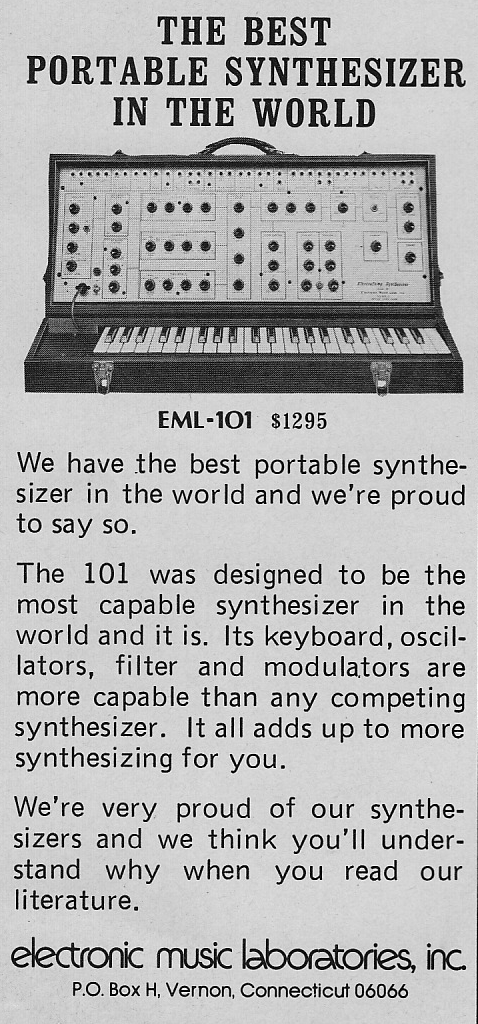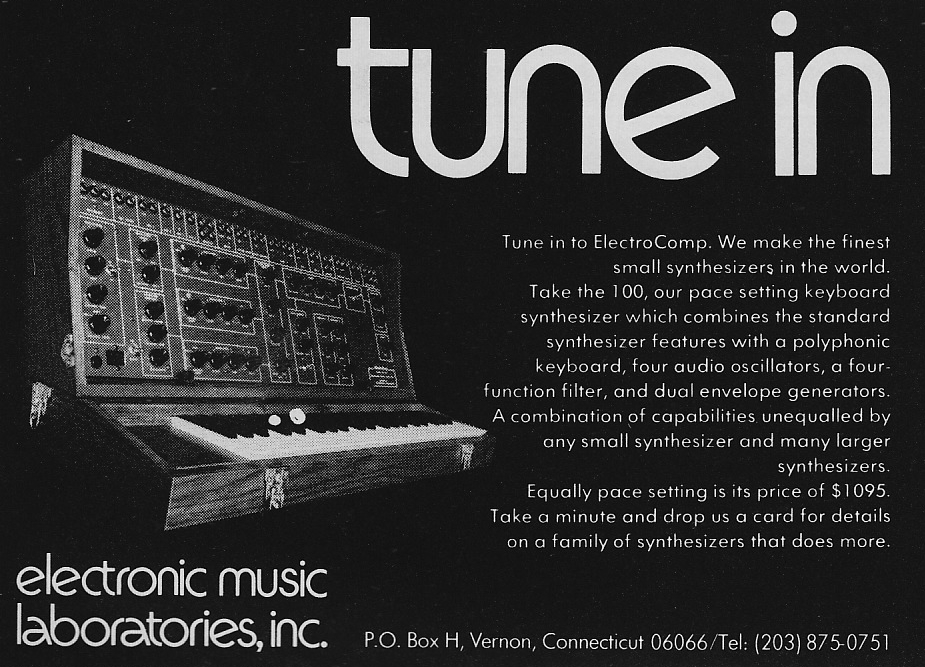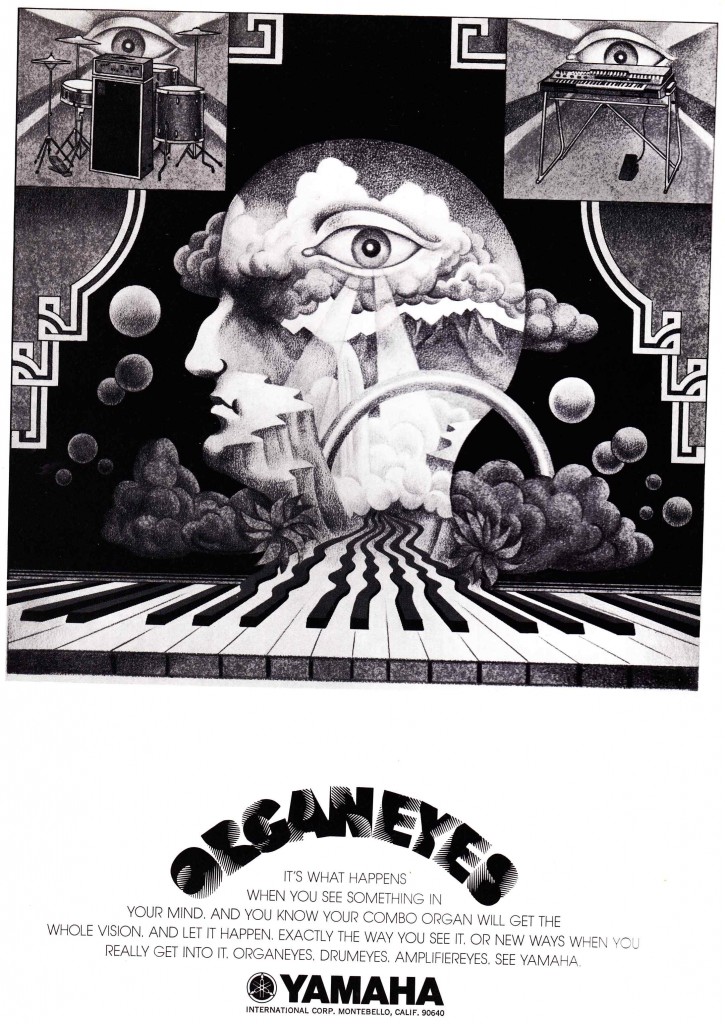 Man I love this image. Yamaha YC Combo Organ advert circa 1971. “Organ Eyes. It’s what happens when you see something in your mind.” Nice. We briefly used a Yamaha YC20 In our band before we started touring. It was just too damn heavy but wow are those things cool. They were also dirt-cheap.
Man I love this image. Yamaha YC Combo Organ advert circa 1971. “Organ Eyes. It’s what happens when you see something in your mind.” Nice. We briefly used a Yamaha YC20 In our band before we started touring. It was just too damn heavy but wow are those things cool. They were also dirt-cheap.
Today: some random bits of 70’s keyboard culture. If yr using any of these pieces in the studio these days, drop us a line and let us know…
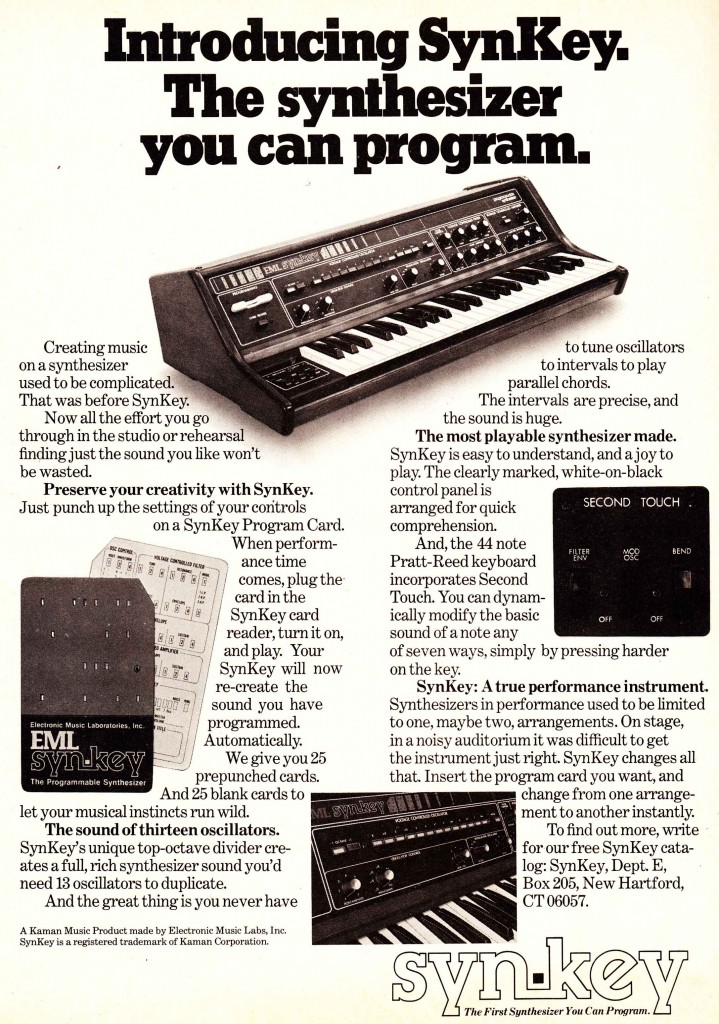
Above: The EML synkey circa 1976. Touted as being the first user-programmable synthesizer, this piece also has a fairly unique feature for it’s day: Aftertouch! Or as EML terms it, “Second Touch.” This advert also solves a little mystery for me… I was wondering what ever did happen to CT-based Electronic Music Labs (EML), and it looks like they ended up as part of the CT-based Kaman musical empire. Click here for some previous EML coverage at PS dot com.
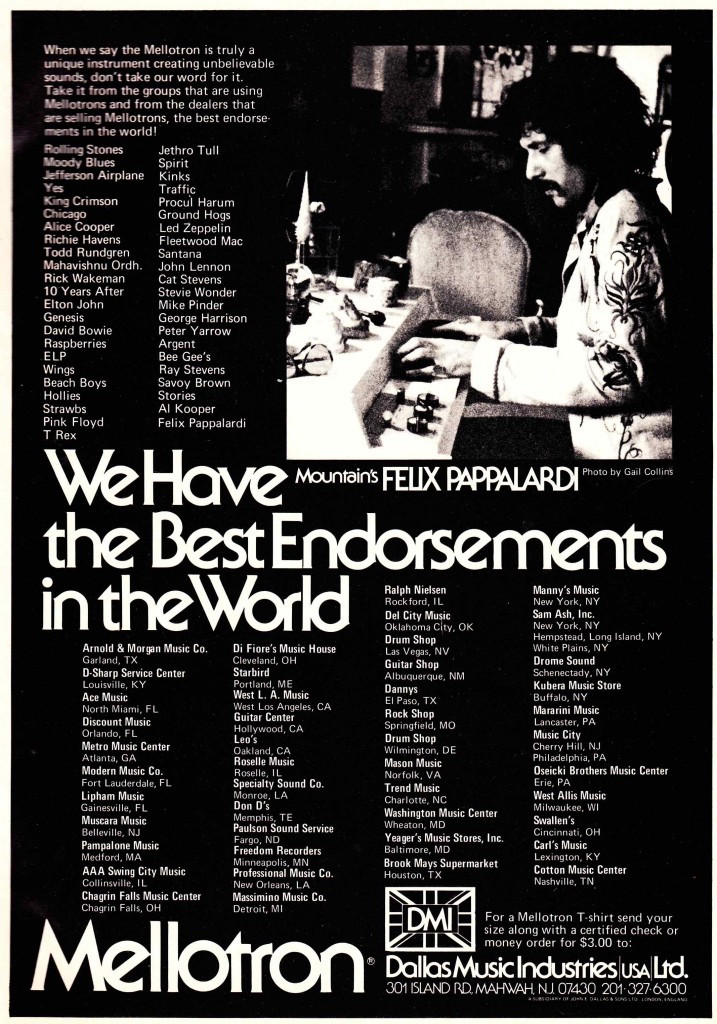 Above: Felix Pappalardi endorses the mighty Mellotron. These things are so classic that it seems almost unbelievable that these things were once advertised, stocked in shops, etc… For those unfamiliar, the Mellotron was a very early sampling keyboard. It accomplished this feat in the pre-digital-audio era by using a separate tape playback mechanism for each key. The tape was not looped, but rather a spring-loaded strip of eight-seconds length, which has the unintentional effect of requiring unusual playing techniques for any musical passage with long sustained chords. Get the whole story here.
Above: Felix Pappalardi endorses the mighty Mellotron. These things are so classic that it seems almost unbelievable that these things were once advertised, stocked in shops, etc… For those unfamiliar, the Mellotron was a very early sampling keyboard. It accomplished this feat in the pre-digital-audio era by using a separate tape playback mechanism for each key. The tape was not looped, but rather a spring-loaded strip of eight-seconds length, which has the unintentional effect of requiring unusual playing techniques for any musical passage with long sustained chords. Get the whole story here.
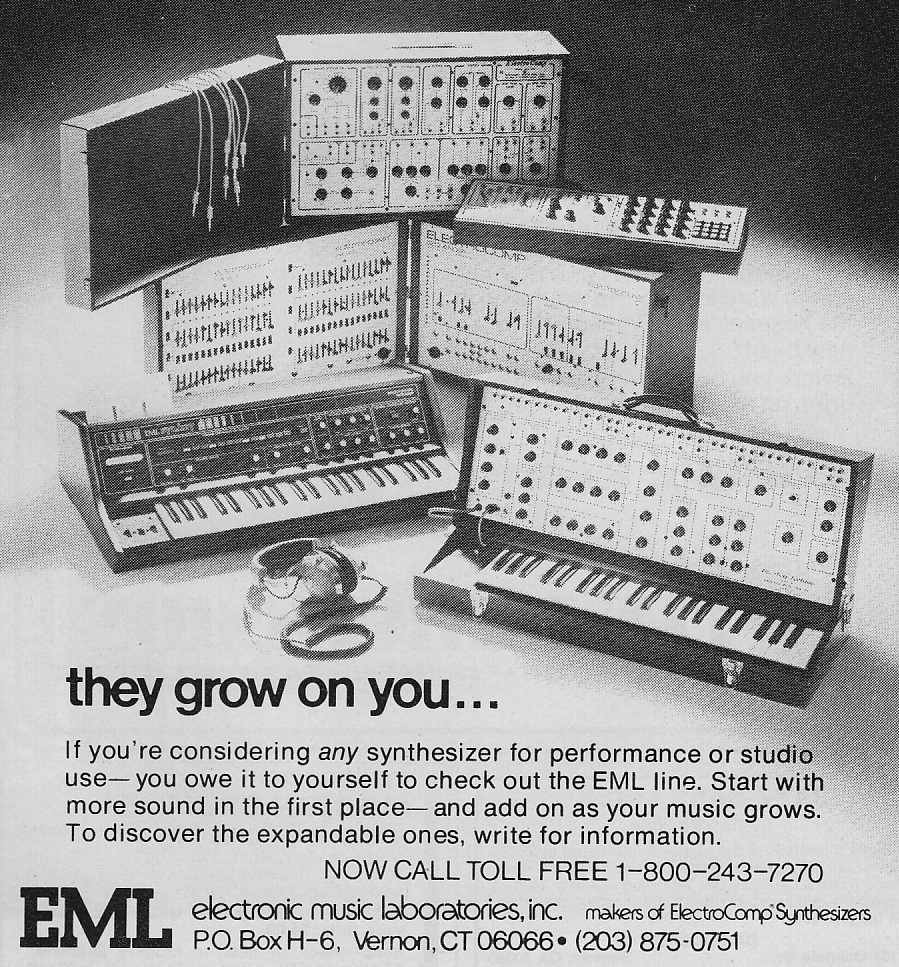 I came across a few more EML (Electronic Music Laboratories) bits that I will share with you. I’ve written a little about EML before, as they were based in Connecticut and lets face it, I am never getting out of this state. Anyhow, click here for our first EML article, and click here for coverage of the 1976 EML SynthKey, which was likely the first synth with aftertouch.
I came across a few more EML (Electronic Music Laboratories) bits that I will share with you. I’ve written a little about EML before, as they were based in Connecticut and lets face it, I am never getting out of this state. Anyhow, click here for our first EML article, and click here for coverage of the 1976 EML SynthKey, which was likely the first synth with aftertouch.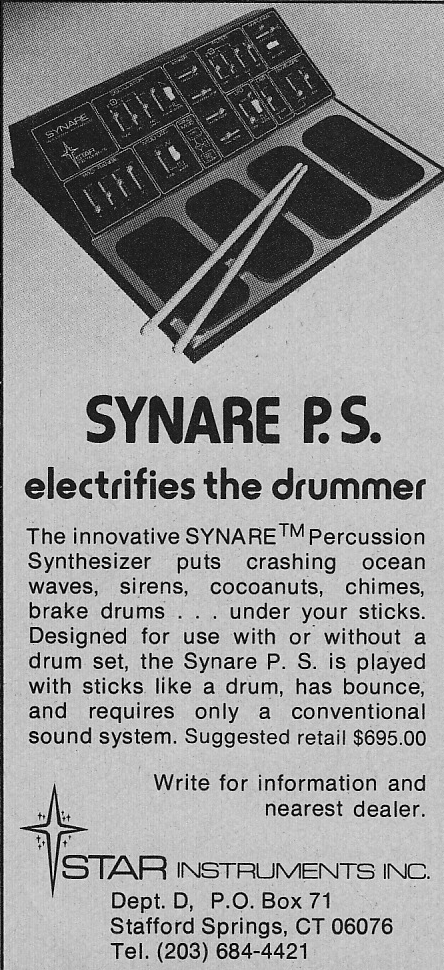 Bonus 70’s CT synth-times: The 1976 Synare PS by Star Systems of Stafford Springs CT. Looks pretty righteous… anyone?
Bonus 70’s CT synth-times: The 1976 Synare PS by Star Systems of Stafford Springs CT. Looks pretty righteous… anyone?